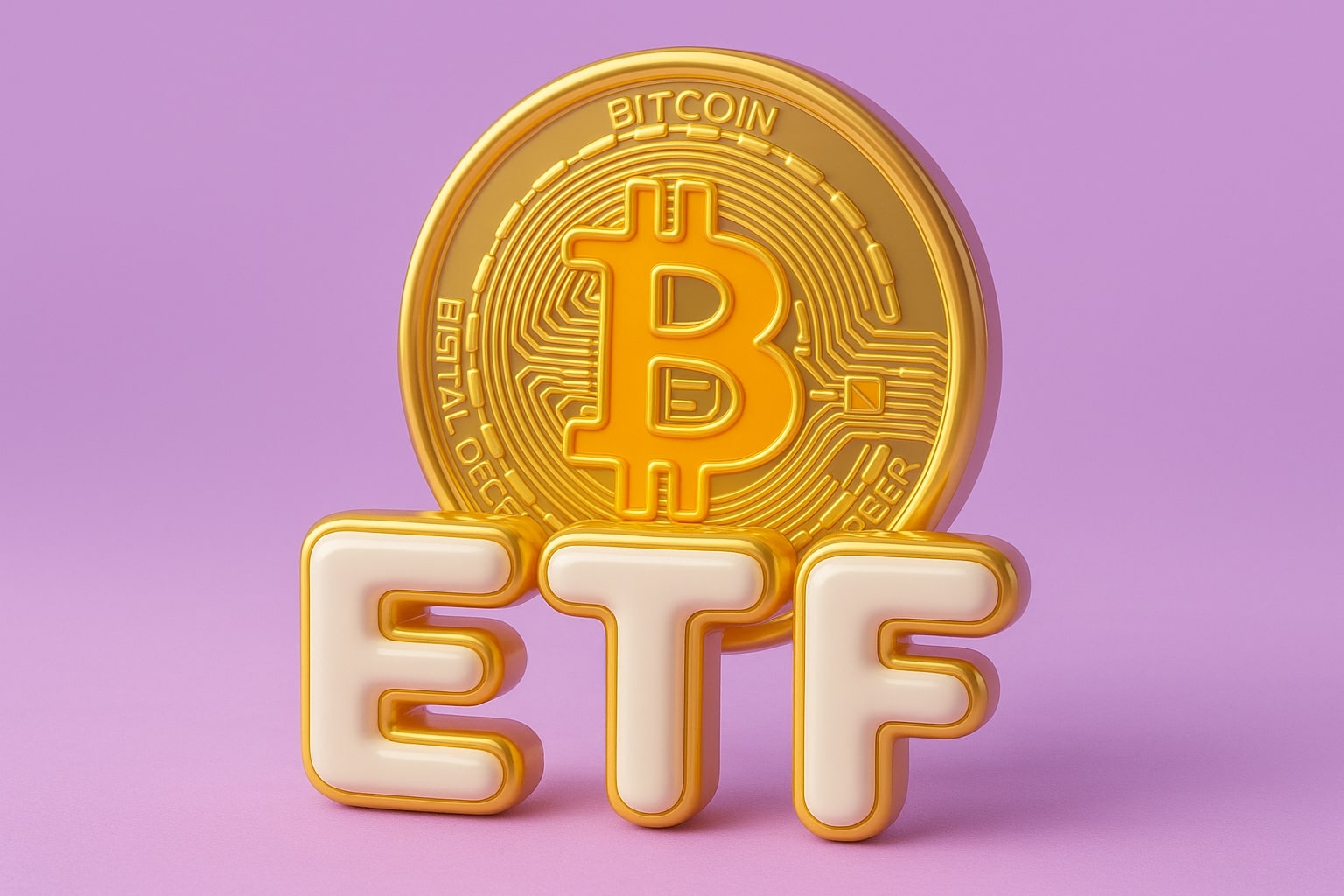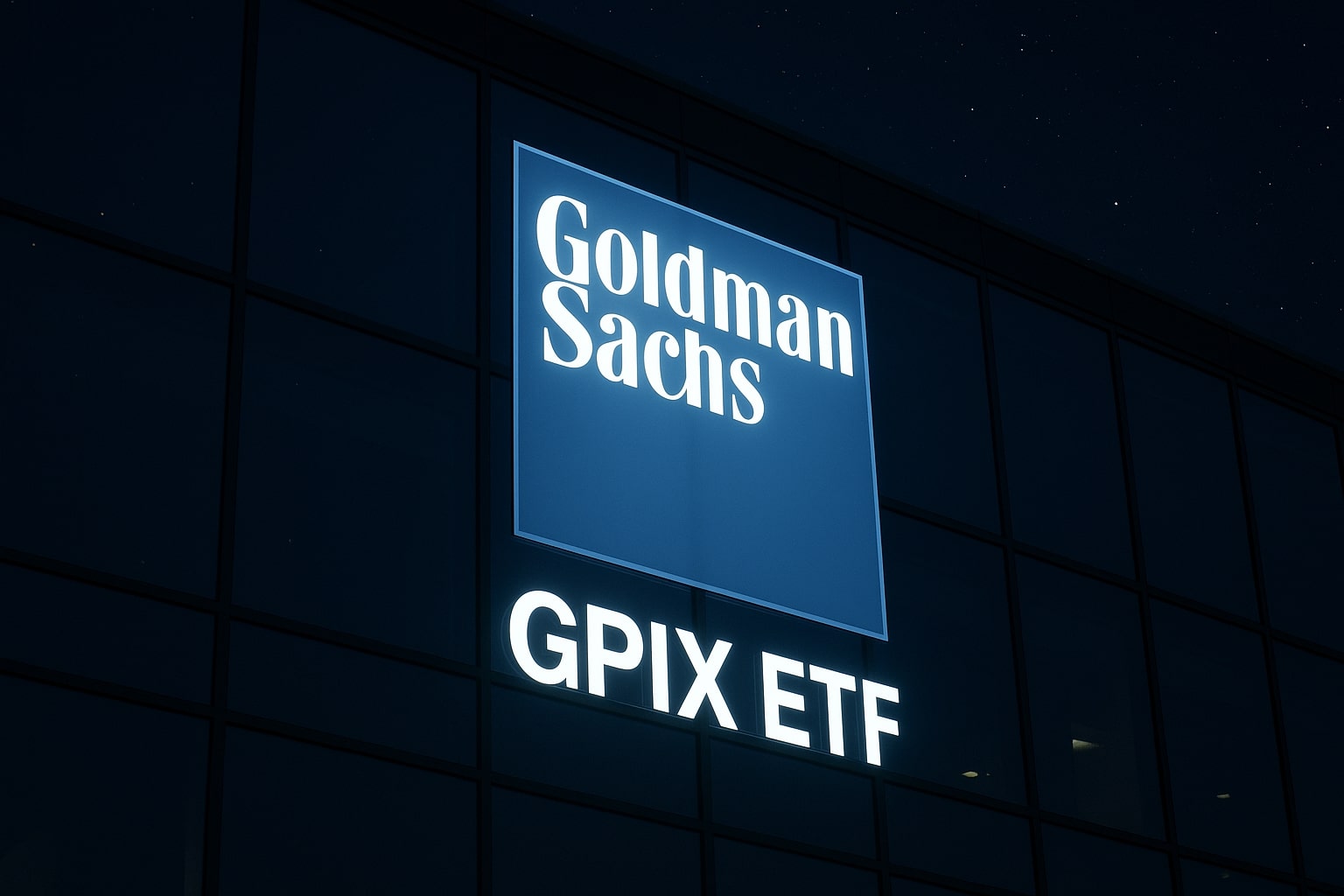
Bitcoin ETF Inflows Hit $5.7 Billion as BlackRock’s IBIT Tops 800,000 BTC - BTC-USD Holds $121,000
Record inflows from U.S. spot ETFs push Bitcoin’s market to new structural highs — BlackRock’s $97B IBIT fund now owns 3.8% of BTC supply, Bitwise forecasts Q4 flows beyond $36B | That's TradingNEWS
Bitcoin ETF Inflows Hit Record $5.7 Billion as Institutional Demand Reshapes BTC-USD Market Structure
Bitcoin (BTC-USD) is holding near $121,300, down 1.6% after peaking at $126,100 earlier this week. Despite the mild retracement, the data behind the current rally shows one of the most aggressive institutional accumulation phases in digital asset history. The structural demand surge through U.S.-listed spot Bitcoin ETFs, led by BlackRock’s IBIT, has fundamentally altered Bitcoin’s liquidity profile, market velocity, and long-term volatility compression.
BlackRock’s IBIT Dominates with 800,000 BTC — Over 3.8% of Total Supply
BlackRock’s iShares Bitcoin Trust (IBIT) surpassed 800,000 BTC in assets under management, equivalent to roughly $97 billion, less than two years after launch. This position represents 3.8% of Bitcoin’s 21 million total supply, cementing IBIT as the single largest institutional holder of Bitcoin worldwide. In the past seven sessions alone, IBIT attracted over $4.1 billion in net inflows, marking its strongest consecutive inflow streak since inception.
The fund’s current AUM also makes it the third-largest ETF instrument across all asset classes, a rare feat for a crypto-linked product. By comparison, MicroStrategy (NASDAQ:MSTR) holds about 640,000 BTC (~$78 billion), meaning BlackRock’s ETF now exceeds even the largest corporate treasury balance sheet in the crypto space.
ETF Flows Reshape Bitcoin’s Institutional Base
Combined U.S. spot Bitcoin ETFs absorbed $5.7 billion in inflows across eight trading days, their most aggressive accumulation since the category’s January 2024 debut. Monday’s session alone saw $1.21 billion in fresh capital — the largest single-day inflow since Trump’s November 2024 election win, which itself ignited a structural bid under Bitcoin’s rally from $67,000 to $108,000.
BlackRock’s IBIT accounted for roughly 72% of total ETF demand this week, dwarfing competitors such as Fidelity’s FBTC and ARK 21Shares’ ARKB, both of which also registered steady net inflows. Even Grayscale’s GBTC, long plagued by outflows since its conversion to a spot ETF, posted positive inflow days — a sign of synchronized institutional engagement across the entire sector.
Bloomberg ETF analysts estimate that IBIT alone represented 10% of all net U.S. ETF flows last week, eclipsing traditional equity and bond ETF categories. This rotation highlights a structural reallocation trend: institutional portfolios diversifying into Bitcoin as a recognized macro hedge rather than speculative exposure.
Bitwise Forecasts Record Q4 Flows and a $125,000 Price Floor
According to Bitwise CIO Matt Hougan, spot Bitcoin ETFs are on track to surpass their 2024 full-year record of $36 billion in inflows, with $22.5 billion already secured through the first nine months of 2025. Hougan projects that Q4 inflows could add another $15–20 billion, driven by a “debasement trade” narrative — where investors hedge against fiat erosion by accumulating hard-cap assets like Bitcoin and gold.
He underscored the macro context: since 2020, U.S. money supply (M2) expanded by 44%, while institutional advisors such as Morgan Stanley now recommend up to 4% portfolio allocation to Bitcoin for risk-tolerant clients. This marks a generational shift — Bitcoin is now being integrated into regulated wealth management models as a legitimate macro asset.
Hougan added that both gold and Bitcoin have outperformed all major assets year-to-date, feeding into the liquidity rotation away from fiat exposure. With Bitcoin ETFs surpassing $2 billion in inflows over just two trading days, Bitwise expects this structural trend to sustain through Q4 — a period historically associated with Bitcoin’s strongest performance cycles.
On-Chain Accumulation Confirms Institutional Depth
On-chain data from Glassnode reinforces the institutional narrative: 97% of circulating Bitcoin supply is now in profit, a statistic typically associated with late-stage bull runs. However, the distribution data reveals otherwise — ownership is spreading deeper into wallets holding 10 to 1,000 BTC, a sign of organic, multi-tier accumulation rather than short-term speculation.
Glassnode’s Accumulation Trend Score (ATS) now hovers near 1.0, signaling near-universal net buying among large and mid-tier holders. Historically, this metric has only reached such levels during major cycle pivots — including 2017’s breakout from $3,000 to $19,000 and 2020’s advance from $10,000 to $40,000.
The firm also observed that Bitcoin’s realized profit ratios remain modest compared to 2021 highs, implying that while nearly all holders are in profit, few are yet distributing aggressively — a pattern consistent with long-horizon accumulation rather than short-term flipping.
Rising Futures Open Interest Highlights Leverage Rebuild
Futures data complements this view but introduces caution. Bitcoin open interest has surged to $50 billion, the highest on record, while annualized funding rates have exceeded 8%, indicating an aggressive long-leverage bias. This composition increases the risk of short-term volatility spikes if the market encounters profit-taking or a liquidity shock.
Still, the data suggests no immediate overheating. The leverage is primarily concentrated in institutional-grade CME Bitcoin futures, not retail-dominated perpetual contracts. This distinction matters — CME positions are fully collateralized, signaling legitimate institutional hedging rather than speculative overextension.
Read More
-
GPIX ETF At $52.52: 8% Yield And Dynamic S&P 500 Income Upside
13.12.2025 · TradingNEWS ArchiveStocks
-
XRP ETFs Surge Toward $1B As XRPI Hits $11.64 And XRPR $16.48 With XRP Near $2
13.12.2025 · TradingNEWS ArchiveCrypto
-
Natural Gas Price Forecast: NG=F Hovers Near $4.07 Support After 22% Weekly Slide
13.12.2025 · TradingNEWS ArchiveCommodities
-
USD/JPY Price Forecast - Dollar to Yen at 154–158 Range as BoJ 0.75% Hike and Fed Cut Debate
13.12.2025 · TradingNEWS ArchiveForex
Macro Context: The Debasement Trade and Policy Alignment
Macroeconomic conditions have amplified Bitcoin ETF inflows. The U.S. fiscal deficit remains above $1.8 trillion, with the Federal Reserve maintaining a 4.75% policy rate and broad money supply continuing to expand. Meanwhile, inflation expectations remain anchored above 2.7%, and gold has reached $2,540 per ounce, both supporting Bitcoin’s narrative as a store of value hedge.
Hougan called this phenomenon the “debasement trade” — the growing institutional recognition that hard-cap digital assets outperform when fiat policy credibility erodes. Major banks, including JPMorgan, now acknowledge this macro thesis, further legitimizing the asset class.
Global Political Stability Fuels Confidence in Risk Assets
ETF inflows were also accelerated by easing geopolitical tensions following the Trump-brokered Middle East peace framework, which reduced short-term volatility in energy and currency markets. BRN Research noted that the normalization of oil prices around $86 per barrel and softening Treasury yields below 4.1% gave investors a “clearer runway into Q4” to add risk exposure — particularly through Bitcoin ETFs.
This geopolitical backdrop has stabilized global asset correlations, lowering volatility in Bitcoin’s derivative markets. Historically, reduced macro uncertainty coincides with net inflows into risk assets like BTC and Nasdaq 100 components.
Whale Behavior and Treasury Expansion
The whale cohort—wallets exceeding 10,000 BTC—has increased holdings by roughly 55,000 BTC since late September, equivalent to $6.7 billion at current prices. Simultaneously, sovereign treasuries and corporate balance sheets continue to expand exposure: the U.S. Treasury’s Digital Reserve Division confirmed renewed discussions around nation-level Bitcoin accumulation strategies, validating BTC’s positioning as a reserve diversification tool.
Institutional filings show over 400 U.S.-regulated funds now report Bitcoin ETF exposure in quarterly 13F filings, compared to fewer than 50 a year ago. Collectively, they control more than $300 billion in managed assets, confirming mainstream portfolio integration.
Technical Structure: Consolidation Above $120,000 Key for Continuation
Technically, BTC-USD has held its 50-day simple moving average near $114,000, with short-term support emerging at $117,000, where approximately 190,000 BTC were last transacted according to Glassnode’s Cost Basis Distribution heatmap. A sustained close above $123,500 would likely confirm a new cyclical base and open targets near $135,000–$150,000, based on Fibonacci extensions.
Momentum oscillators remain neutral-to-positive: the RSI sits near 63, while MACD and ADX both signal trend continuation. With all major moving averages (10, 20, 50, 100, 200) trending upward, structural support remains intact.
Supercycle Framework and $450,000 Long-Term Projection
Technicians such as Merlijn The Trader identify a Jesse Livermore Accumulation Cylinder on the monthly BTCUSD chart — a rare pattern signaling the early stages of a “vertical mania phase.” The setup suggests Bitcoin could track toward $450,000–$500,000 in a mature supercycle scenario, supported by ETF-led demand and tightening supply.
This model mirrors past historical expansions, where similar structures produced 500%+ moves from the consolidation base. The probability of such exponential behavior is elevated now, given the ETF market’s structural bid and global treasury participation.
Market Outlook: Institutionalization Reshapes the Bitcoin Cycle
Bitcoin’s ETF-driven rally is not merely speculative enthusiasm but an architectural shift. The ongoing $5.7 billion inflow streak and BlackRock’s 800,000 BTC holdings anchor the digital asset within regulated financial systems. Liquidity depth is unprecedented, volatility dampening is measurable, and institutional ownership now defines price behavior more than retail trading does.
While leverage-driven pullbacks remain a near-term risk, the fundamental backdrop of monetary expansion, geopolitical normalization, and institutional adoption builds an undeniable floor under the market.
Verdict: Strong Buy — Institutional Liquidity Dominates Market Structure
The evidence across ETF flows, macro positioning, and on-chain accumulation converges on one conclusion: Bitcoin’s structural base has matured. With spot ETF AUM surpassing $100 billion, 97% of supply in profit, and record $5.7 billion inflows, Bitcoin (BTC-USD) is in the most institutionally supported bull phase in its history.
Short-term volatility from futures leverage remains possible, but the long-term trend remains bullish. Based on ETF absorption rates, liquidity metrics, and historical cycle analogs, fair value for BTC now stands near $135,000, with potential expansion to $180,000–$200,000 in early 2026 if Q4 inflows persist above $2 billion per week.
Bitcoin’s transformation into a mainstream reserve asset is no longer a projection—it is measurable capital flow reality.

















